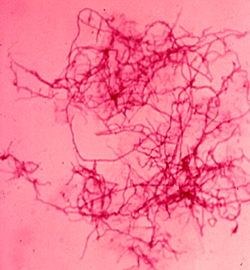
Accurate identification of bacterial isolates is an essential task of the clinical microbiology laboratory that enables initiation of proper antimicrobial therapy. For many organisms, traditional phenotypic identification may be difficult, laborious and time-consuming. This issue is further confounded by phenotypic variation within species, many newly described pathogenic species and the limited battery of phenotypic tests available to distinguish among established and potential bacterial pathogens. It is sometimes essential to identify bacterial isolates to species level in order to rule out species that are drug resistant or more pathogenic, to detect unsuspected pathogens, ascribe pathogenicity to species so far considered to be nonpathogenic and to identify new bacterial species.
With more than 20,000 sequences available in public databases (e.g. NCBI), 16S ribosomal RNA gene (rRNA) sequencing is considered by current taxonomists to be the gold standard in bacterial identification and classification. 16S rRNA gene contains conserved regions useful for the design of broad-range PCR primers that can amplify various fragments of the 16S rRNA gene from pathogenic and nonpathogenic bacteria. These fragments include hypervariable regions containing species-specific signature sequences useful for bacterial identification to species level.
In many specimens bacteria can be seen by microscopy of tissue sections but are very difficult to grow due to their fastidious nature, or are not viable as a result of antimicrobial therapy. Some specimens may never reveal the presence of a bacterial pathogen because of low abundance and/or lack of viability. The use of PCR to detect this DNA extracted directly from clinical specimens facilitates the identification of these pathogens.
For interesting cases emplyoying this test methodology, please see our Clinical Significance page.